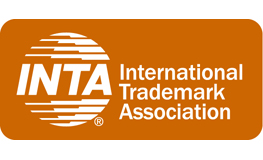From November 19th to the 22nd, I attended the International Trademark Association Leadership Meeting in Austin, Texas. There are 1500 individuals from all over the world gathered in Austin to network with clients, friends, and colleagues and to learn about the latest developments in anti-counterfeiting laws, steps being taken to control illicit trade activities in Free Trade Zones, and updates on trademark law in numerous countries.
Two topics I found to be very interesting:
- the updates on actions taken by the US Patent and Trademark Office (USPTO) after the US Supreme Court issued rulings in the Tam (2017) and Brunetti (2019) cases and
- the examination of sound and motion trademarks by a former examining attorney from the USPTO.
So I thought I would share a few lessons learned on both topics.
Updates from USPTO after Tam and Brunetti
In 2017, the US Supreme Court ruled that the disparagement clause of the US Trademark Act (Lanham Act) was unconstitutional. Then in 2019, the US Supreme Court ruled the scandalous and immoral clause in the Lanham Act was unconstitutional.
Both cases basically stated these clauses were unconstitutional restrictions on free speech. So the USPTO should have stopped refusing to register trademarks it considered immoral, scandalous, or disparaging. But did it?
According to Megan Carpenter from the University of New Hampshire School of Law, Franklin Pierce Center for Intellectual Property, and John Sommer of Stussy, Inc., the USPTO has not stopped refusing to register these trademarks.
Instead, they have found different reasons to not register trademarks, such as arguing the mark is a common word. The examining attorneys are referencing online dictionary definitions as evidence of common words; seventy percent (70%) of the time without considering context and how the trademark is used in commerce.
The examining attorneys are inconsistent in how they review trademark applications that might be considered immoral, scandalous, or disparaging. A trademark application for the mark, WHORE, might be approved in a class for clothing. But a trademark application for the mark, BITCH, will be refused.
So the subjective viewpoint of the examining attorney is still in play — instead of an objective policy.
As a result, there is still a quiet battle going on between the USPTO and trademark practitioners who oppose their censorship tactics. Mr. Sommer hinted at future cases that will challenge the continuing practice of the USPTO. We shall have to wait and see.
The Registration of Sound Marks
Jason Blair, a former examining attorney with the USPTO, talked about the history of the registration of sound trademarks.
In 2006, he figured out that the USPTO was not requiring the owners of sound marks to provide the actual music or specimens of use in commerce for the registration of sound marks. The USPTO was only requiring a written description of the sound mark.
The examining attorneys reviewing the applications for sound marks had no musical training at all. Mr. Blair, who had a background in music, volunteered to set up policies and procedures for the registration of sound marks.
From 2006 to 2012, he worked as the only examining attorney reviewing sound marks for registration. He eventually developed a team of examining attorneys who review sound marks, which range from the NBC musical tones to the distinct sound of a hinge on sunglasses.
Here is a PDF of an example of the trademark registration of a sound/sensory mark for an insurance company. Very different.
The International Trademark Association Leadership Meeting provides great learning experiences and updates. If you need help with a different type of trademark, give us a call at Marks Gray. We love a challenge!
